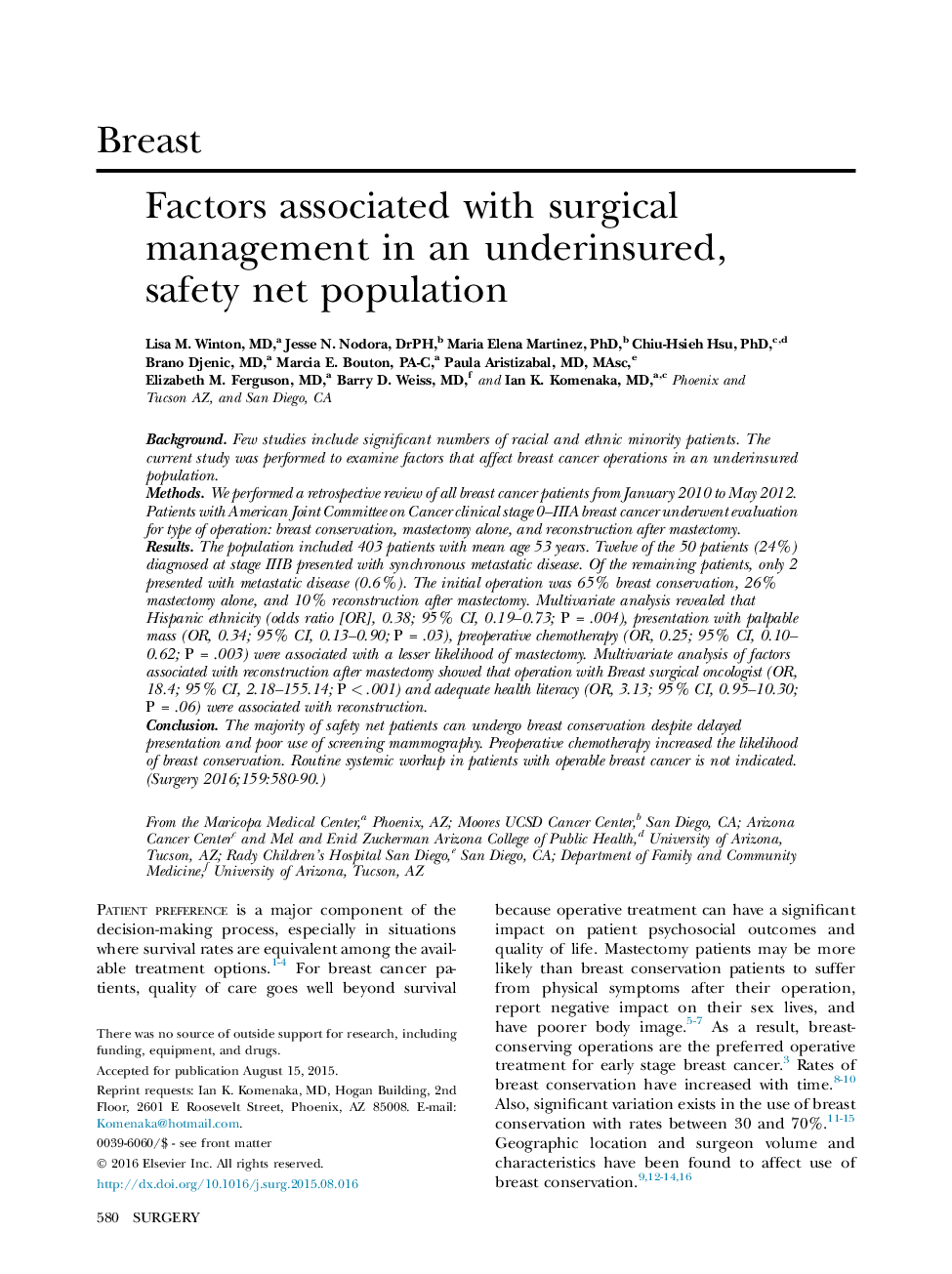| Article ID | Journal | Published Year | Pages | File Type |
|---|---|---|---|---|
| 4306469 | Surgery | 2016 | 11 Pages |
BackgroundFew studies include significant numbers of racial and ethnic minority patients. The current study was performed to examine factors that affect breast cancer operations in an underinsured population.MethodsWe performed a retrospective review of all breast cancer patients from January 2010 to May 2012. Patients with American Joint Committee on Cancer clinical stage 0–IIIA breast cancer underwent evaluation for type of operation: breast conservation, mastectomy alone, and reconstruction after mastectomy.ResultsThe population included 403 patients with mean age 53 years. Twelve of the 50 patients (24%) diagnosed at stage IIIB presented with synchronous metastatic disease. Of the remaining patients, only 2 presented with metastatic disease (0.6%). The initial operation was 65% breast conservation, 26% mastectomy alone, and 10% reconstruction after mastectomy. Multivariate analysis revealed that Hispanic ethnicity (odds ratio [OR], 0.38; 95% CI, 0.19–0.73; P = .004), presentation with palpable mass (OR, 0.34; 95% CI, 0.13–0.90; P = .03), preoperative chemotherapy (OR, 0.25; 95% CI, 0.10–0.62; P = .003) were associated with a lesser likelihood of mastectomy. Multivariate analysis of factors associated with reconstruction after mastectomy showed that operation with Breast surgical oncologist (OR, 18.4; 95% CI, 2.18–155.14; P < .001) and adequate health literacy (OR, 3.13; 95% CI, 0.95–10.30; P = .06) were associated with reconstruction.ConclusionThe majority of safety net patients can undergo breast conservation despite delayed presentation and poor use of screening mammography. Preoperative chemotherapy increased the likelihood of breast conservation. Routine systemic workup in patients with operable breast cancer is not indicated.
